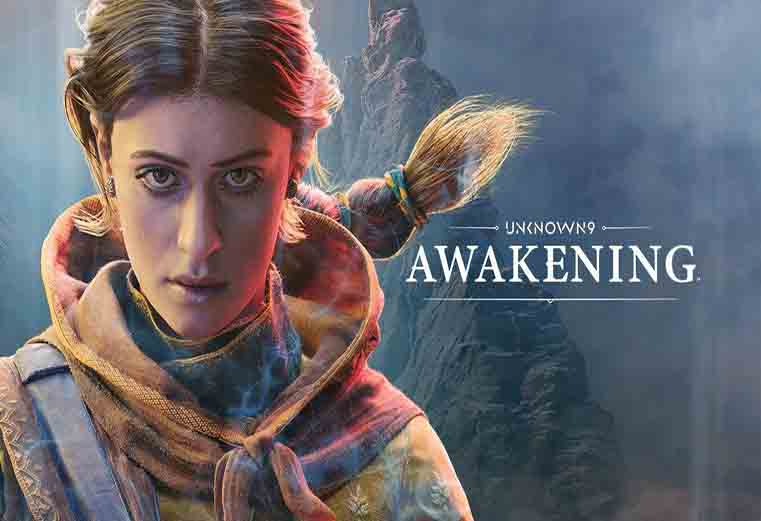The roots of the Unknown 9 universe can be traced back to a passionate vision of storytelling that sought to intertwine interactive experiences and narrative depth. This ambitious initiative aimed to create a transmedia narrative that spanned across various platforms, including video games, novels, and immersive experiences. However, several factors played a pivotal role in sowing the seeds of its cancellation:
- Over-innovation: The project’s aim to be at the cutting edge of technology often led to complexities that outpaced advancement timelines.
- Lack of clarity: While the narrative scope was vast, key story elements remained vague, making it difficult for audiences to fully engage and invest.
- Market dynamics: The entertainment landscape is notoriously fickle; changing consumer preferences and oversaturation in the gaming market created a tough environment for the universe to flourish.
In retrospect, the intricate web of creative ambition and logistical challenges may have been too much for the Unknown 9 universe to withstand. As the dream of a sprawling narrative began to dissolve, key stakeholders faced the harsh reality of a project that, while innovative, struggled to translate its grand ambitions into a cohesive and financially viable package. The juxtaposition of creative vision against real-world execution raises questions about the balance between innovation and practicality in today’s entertainment landscape.
Analyzing Fan Engagement and Community Response to the Unknown 9 Project
The cancellation of the Unknown 9 project has triggered a wave of reactions from fans and the wider gaming community, reflecting a complex tapestry of emotions and opinions. As fans took to social media platforms, their responses ranged from disbelief to disappointment, highlighting a profound sense of investment in the universe that had been teased through various media. Many expressed empathy for the developers, acknowledging the challenges of navigating a rapidly changing entertainment landscape. The community has primarily voiced their concerns regarding unfulfilled promises and the loss of potential storytelling opportunities, which were perceived as a fresh take on interactive narratives. Key sentiments included:
- Frustration over lack of transparency from the developers
- Sadness regarding the unexplored lore and character arcs
- Hope for a potential revival or reimagining of the project
Additionally, fan engagement has showcased a desire for accountability and constructive dialog between creators and their audience. Surveys and polls conducted in various fan forums revealed a keen interest in understanding the motivations behind the project’s halt while emphasizing the importance of maintaining an open line of interaction. Many in the community have suggested that a lack of solid updates and unclear timelines contributed to a waning excitement for the Unknown 9 universe. A meaningful portion of fans indicated they would have appreciated more engagement in the development process, as a means to foster transparency and trust. This discourse signals a broader trend in the gaming industry:
- The need for consistent updates from creators
- Increased demands for community involvement in decision-making
- A growing recognition of the emotional ties between fans and projects
 Lessons learned: Navigating Game Development in a Crowded Market
Lessons learned: Navigating Game Development in a Crowded Market
In the bustling realm of game development, standing out can feel like climbing an uphill battle, particularly in a market flooded with innovative ideas and established franchises. The cancellation of the Unknown 9 universe sheds light on several key takeaways for developers navigating these treacherous waters. First, understanding your audience is crucial. A game that fails to resonate with its target demographic, no matter how ambitious its vision, risks falling flat. Developers must engage with potential players early on,gathering feedback to shape the game’s direction and ensure it appeals to its intended audience. This user-centric approach not only fine-tunes gameplay mechanics but also bolsters community support, which can be vital for funding and marketing efforts down the line.
Another significant lesson revolves around the importance of agility within development teams. Projects like Unknown 9 frequently enough grapple with delayed timelines and shifting expectations,which can spiral into a crisis of identity for the game. Being adaptable allows developers to pivot when needed, modifying concepts based on market trends or player feedback. Moreover, embracing an iterative development process can led to more lasting choices regarding product scope. The simultaneous balancing of ambition and feasibility creates a more resilient foundation,allowing for creative experimentation while managing risks — a delicate dance crucial for survival in an industry marked by uncertainty.
 Future Directions: Recommendations for Reviving Transmedia Storytelling in Gaming
Future Directions: Recommendations for Reviving Transmedia Storytelling in Gaming
To reinvigorate transmedia storytelling within the gaming industry, creators and developers must embrace a more integrated approach to narrative design. Cross-platform narratives would allow players to experience stories through various media, fostering a deeper emotional connection to the characters and the world they inhabit. By ensuring that games are just one facet of a larger narrative experience, developers can create compelling story arcs that span video games, graphic novels, and even live-action series. Collaborations with established storytellers in other mediums should be prioritized, as their expertise can guide the cohesive development of expansive universes that resonate across different audiences.
Furthermore, player engagement should be emphasized not just within the game but throughout the entire transmedia experience. Incorporating interactive elements such as real-time choices that influence the wider narrative can enhance immersion, making players feel like active contributors rather than passive consumers. Leveraging technologies like augmented and virtual reality can further bridges between gaming and other storytelling formats. lastly, fostering cultivating communities around these experiences will be crucial; platforms that encourage fan interaction and co-creation can sustain interest and expand the narrative’s reach, ultimately reviving the full potential of transmedia storytelling in gaming.
